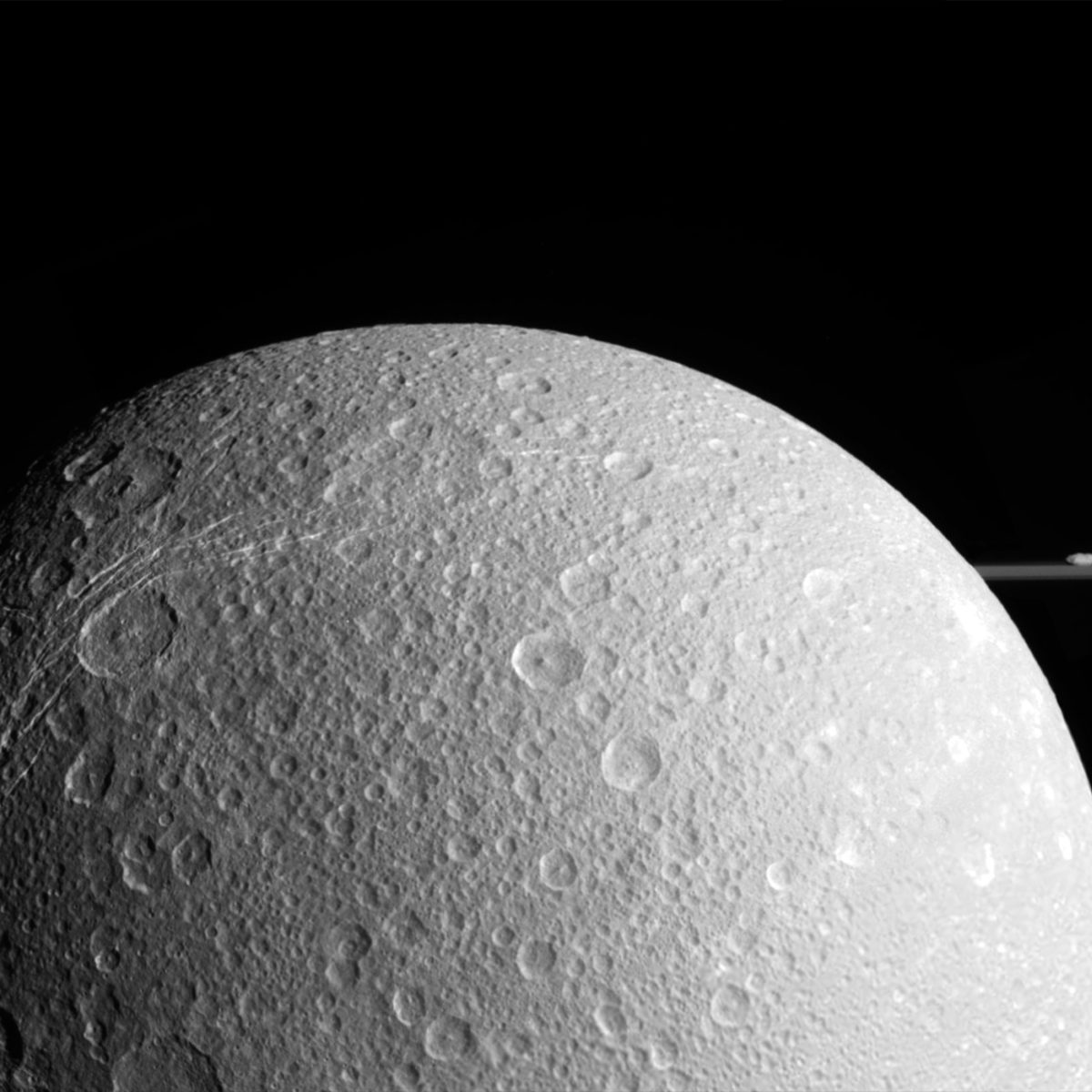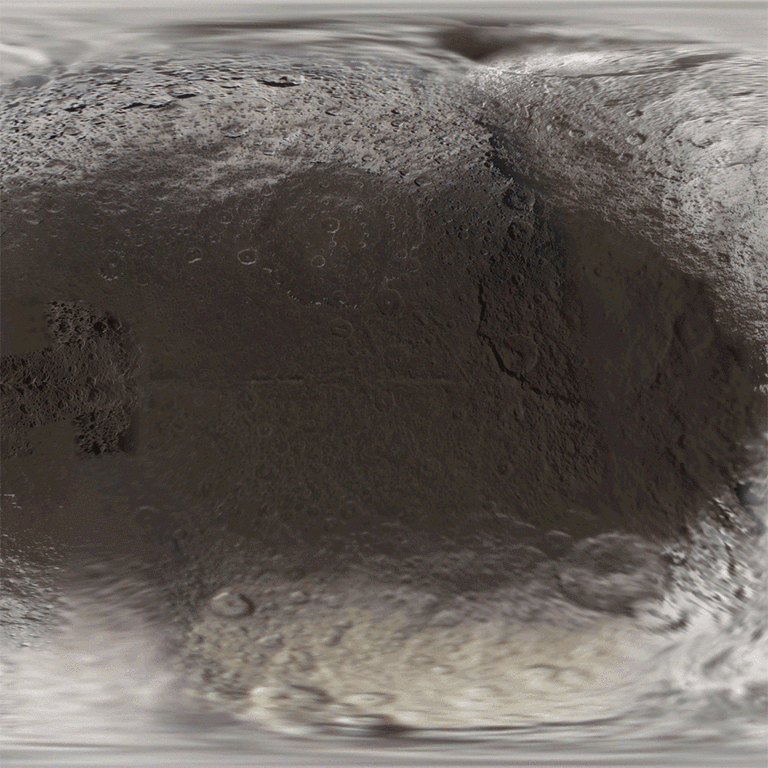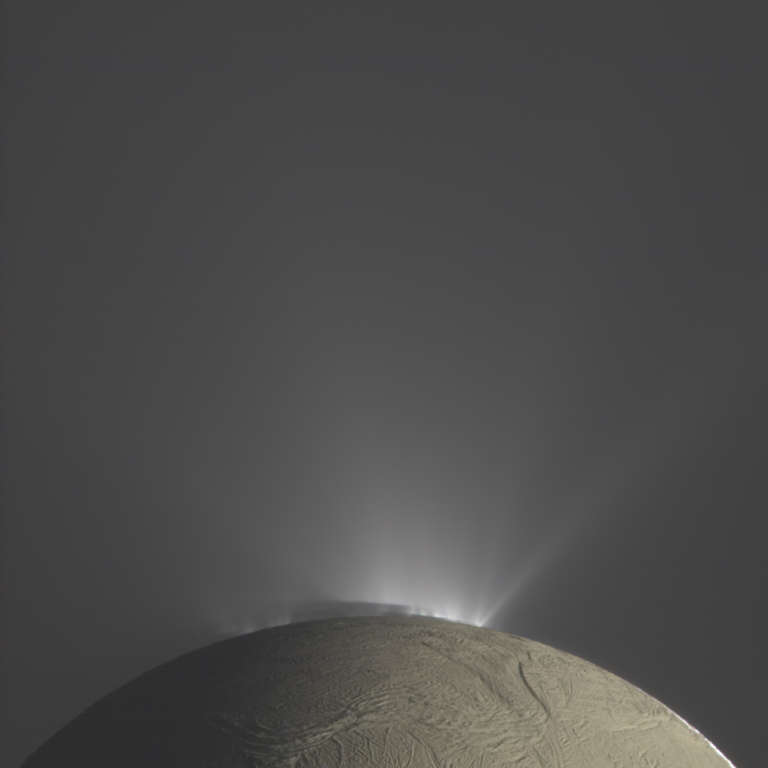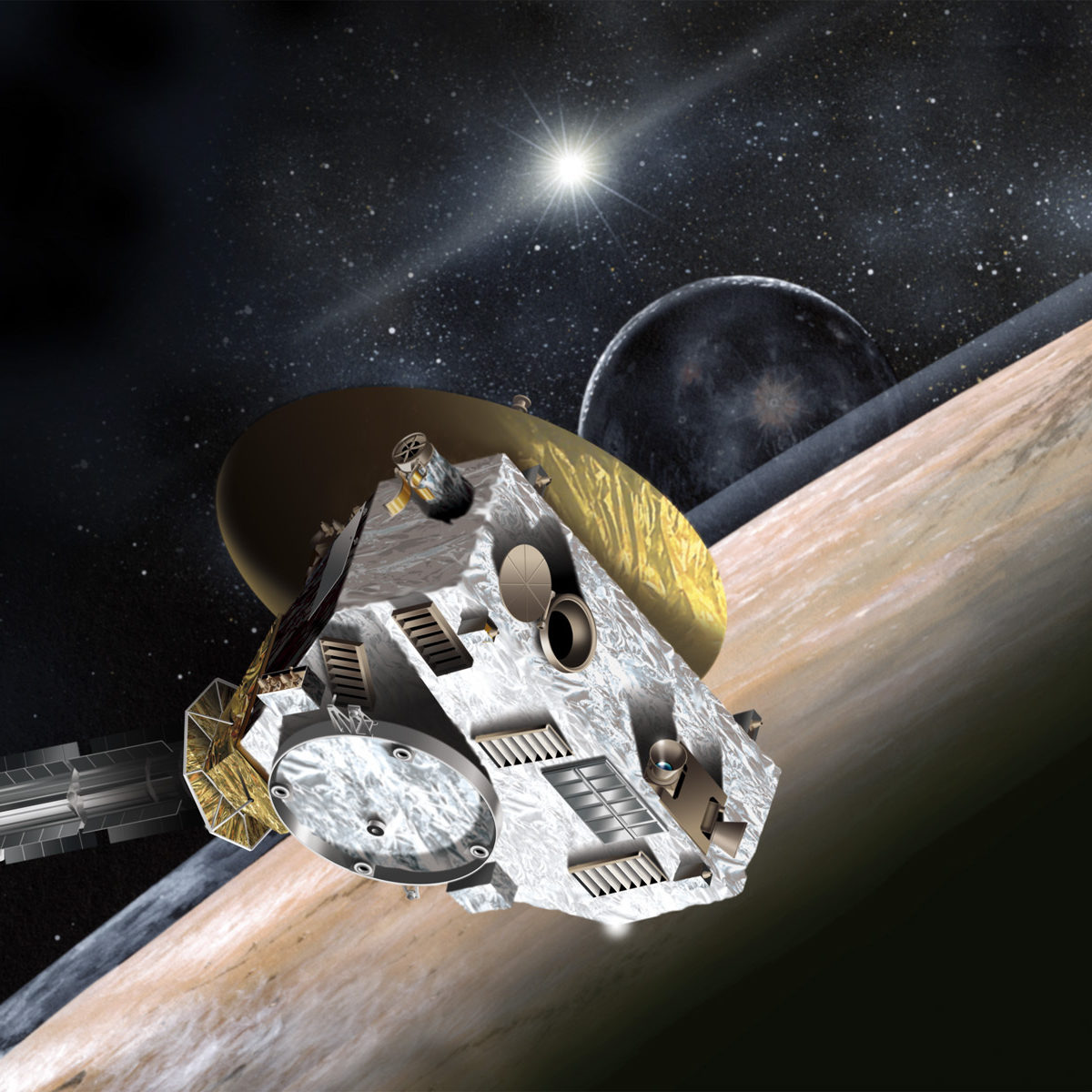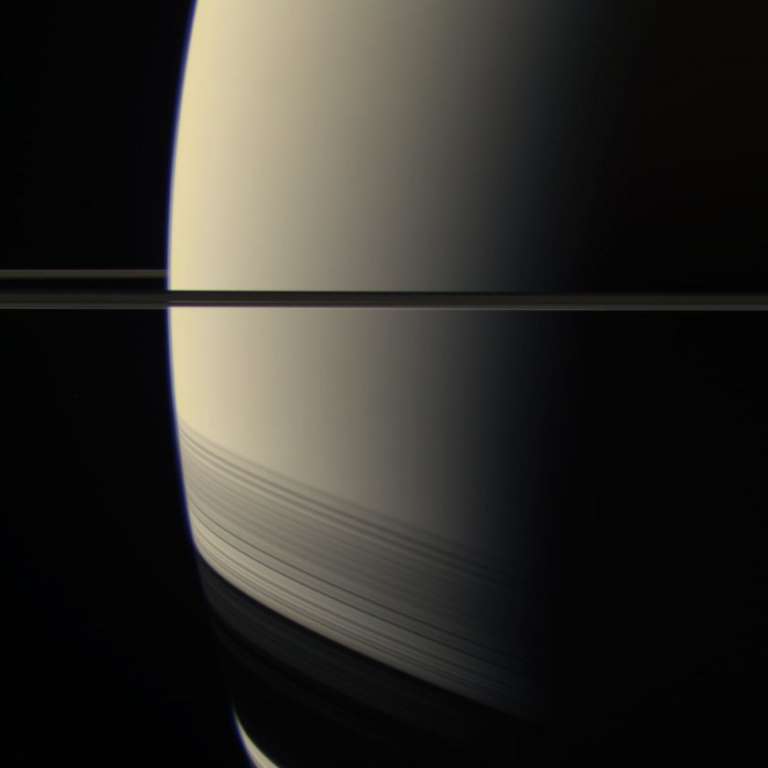All
All
Stories, updates, insights, and original analysis from The Planetary Society.
Evaporites on Titan
Evaporites form on planetary surfaces when dissolved chemical solids precipitate out of saturated solution as their liquid solvent evaporates and, until recently, were known to exist only on Earth and Mars. This article from the IAG Planetary Geomorphology Working Group describes the third planetary instance of evaporite, discovered on Saturn's moon Titan.
Pretty picture: Saturn, a big moon, and a teeny one
A recent view from Cassini of Saturn with its largest moon (Titan) and one of its small ringmoons, Prometheus.
Pretty pictures from Cassini's 12 December 2011 Dione flyby
Cassini flew close by Dione on December 12 and, as usual, the close pass provided opportunities for lots of dramatic photos, not just of Dione, but of other moons wandering by in the background.
More radar images of icy moons from Cassini: Iapetus, Enceladus, and Rhea
When I posted about the really cool Cassini SAR images of Enceladus a few weeks ago, I initially wrote that this was the first-ever SAR image of an icy moon other than Titan. Several people (some readers and two members of the Cassini science team!) corrected that statement: Cassini has performed SAR imaging of other icy moons (including Enceladus) before.
What do we know about planetary rings? Quite a lot, actually!
A summary of a new article by Matt Tiscareno about planetary ring systems that reviews the known ring systems of the four giant planets and the prospects for ring systems yet to be discovered.
Pretty picture: Mimas scuttles behind Dione
Images from the Cassini spacecraft's flyby of Dione.
First-ever high-resolution Synthetic Aperture Radar image of Enceladus
On the November 6, 2011 flyby of Enceladus -- the third such flyby in just a few weeks -- the Cassini mission elected to take a SAR swath instead of using the optical instruments for once. So here it is: the first-ever SAR swath on Enceladus. In fact, the only other places we've ever done SAR imaging are Earth, the Moon, Venus, Iapetus, and Titan.
Pretty pictures & movies: Eye candy from two recent Cassini Enceladus flybys
Cassini has completed two very close flybys of Enceladus in less than three weeks, one of them just this morning, and the images from that encounter have already arrived on Earth.
Saturnlit moon, sunlit fountains
It's been a week of very heavy science on this blog, so I thought it'd be nice to go into the weekend with a post in which a breathtaking picture speaks for itself, without needing my thousands of words.
Notes from Day 5 of the EPSC/DPS meeting: Saturn's storm, Phobos, and Lutetia
Today was (is) the last day of the Division of Planetary Sciences / European Planetary Science Congress meeting in Nantes, France.
Brief notes from Day 2 of the DPS-EPSC meeting
It's been a very full day at the DPS-EPSC 2011 joint meeting. My day was less full than it might have been, because I overslept and missed most of the morning's session. I really needed the rest though so I think it was probably for the best!
Some first impressions of EPSC-DPS meeting
Today they turned on the scientific fire hose at the Division of Planetary Sciences / European Planetary Science Congress meeting happening here in Nantes, France. My brain already feels full and I still have four more days!
Pretty pictures: Dancing moons
Since Cassini currently orbits Saturn within the plane of Saturn's rings, it has lots of chances to catch two or more moons in the same photo. One such
Tethys and Dione don't seem to be active after all
About four years ago I wrote a blog entry about an ESA press release about paper published in Nature that suggested that Saturn's moons Tethys and Dione might have volcanic activity, like Enceladus. A new paper published in Icarus casts doubt on that conclusion.
Scale solar system presentation slide, a provisional version for you to review
I'm preparing a talk for the Pacific Astronomy and Telescope Show here in Pasadena on Sunday afternoon at 1:45. I have spent the morning putting together a slide that I have long wanted to have for presentations.
New Horizons Day 2: Liquids on Pluto's surface?
Jeff Moore's presentation was cool because of the discussion it stimulated. He considered what exogenic processes might be operating on Pluto's surface. What's an exogenic process? It's something that modifies the shape of the surface from the outside, and doesn't require the body to be geologically active inside.
Titan crater and programming note
The summer is winding to a close but it's not quite over for me -- by which I mean my children -- yet.
New Horizons workshop, day 1: Chemistry & climate on Pluto & other cold places
Today and tomorrow I'm attending the New Horizons Workshop on Icy Surface Processes. The first day was all about the composition of the surface and atmosphere of Pluto, Charon, Triton, and other distant places.
Holey Hyperion!
Yesterday Cassini passed unusually close by Hyperion, the oddly shaped moon that orbits Saturn just beyond Titan. Among the many cool images captured during this flyby were three that I used to make this neato view of Hyperion's crescent.
Pretty picture: Saturn from very close up
I haven't checked in on Cassini lately. I went to the raw images page and found the frames for this very lovely, very close view of Saturn. It was taken by Cassini two days ago, as it was approaching periapsis.


 Explore Worlds
Explore Worlds Find Life
Find Life Defend Earth
Defend Earth


 Sun
Sun Mercury
Mercury Venus
Venus Earth
Earth Mars
Mars Jupiter
Jupiter Saturn
Saturn Uranus
Uranus Neptune
Neptune Small Bodies
Small Bodies

